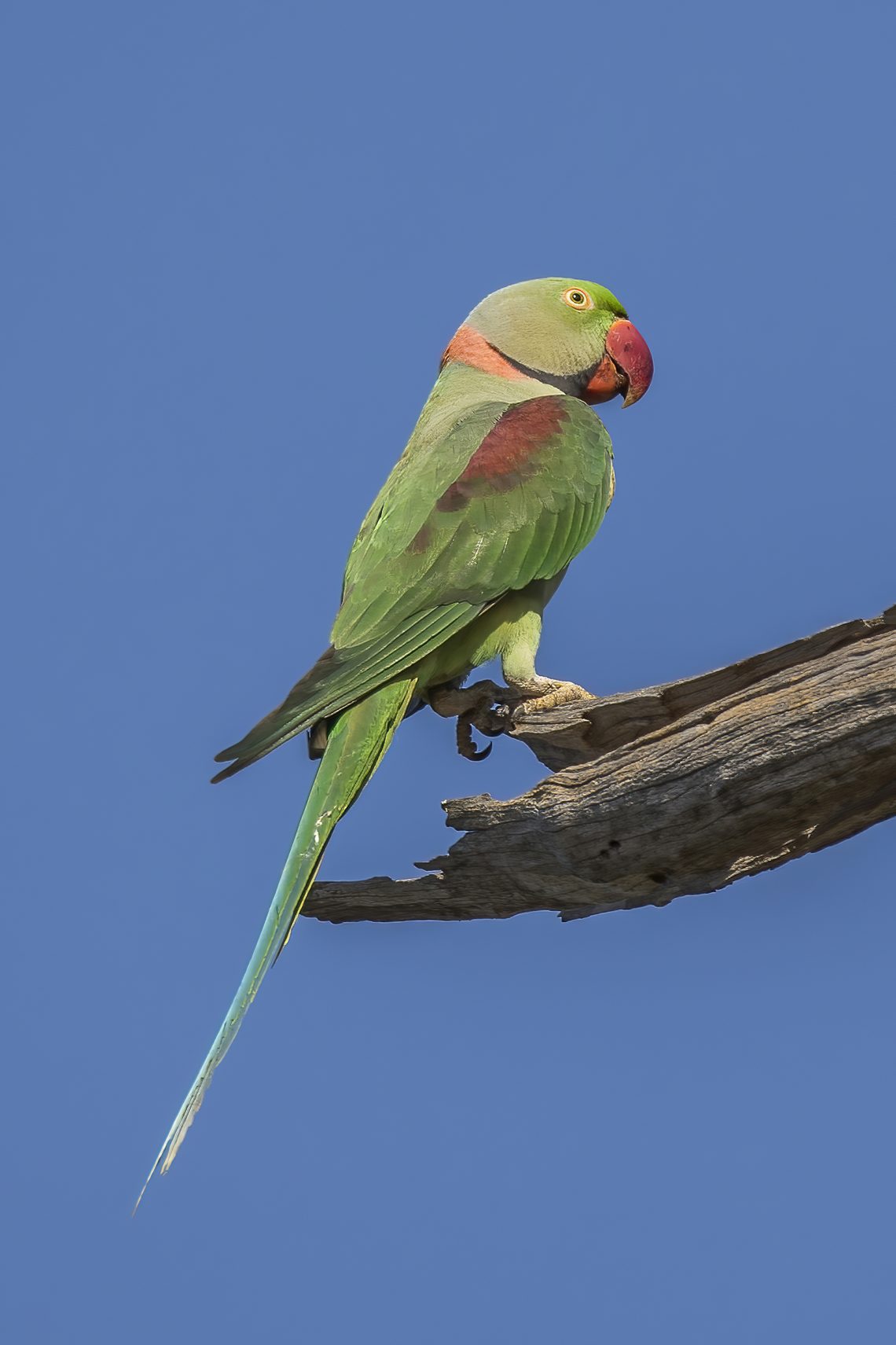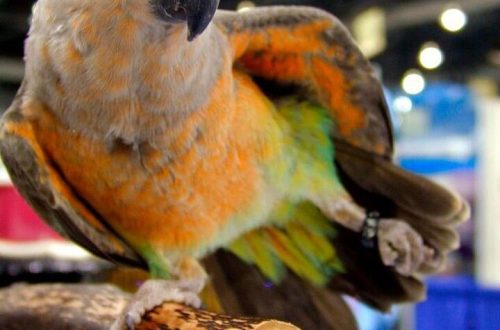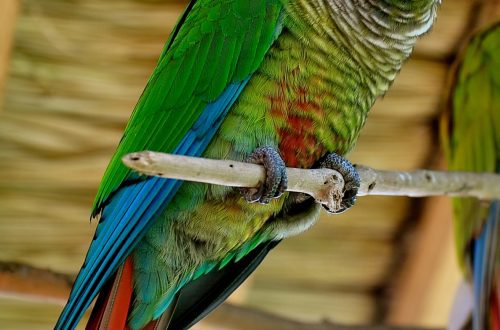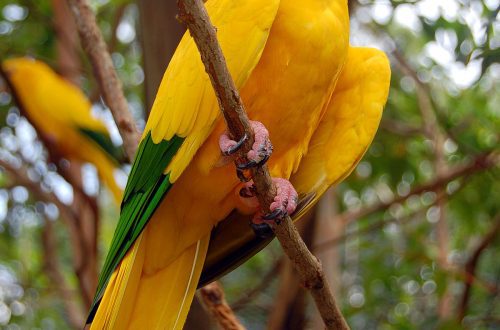
Alexander’s ringed parrot (Psittacula eupatria)
Order | Parrots |
family | Parrots |
Race | ringed parrots |
View | Alexandrov ringed parrot |
Contents
APPEARANCE
The body length of the Alexander ringed parrot (including the tail) is 45 – 58 cm. The feathers are colored mainly green. The belly is light green, and the top of the wings is with brown-red spots. A distinctive feature of males is a ring from the lower part of the beak to the middle of the neck, in the upper part of the neck it is pink-red. But such decoration appears only by 3 years. Females are deprived of the “necklace”. The beak of Alexandrian parrots is large, in adult birds it is burgundy and bright red, in young birds it is carrot.
HABITAT AND LIFE IN NATURE
Alcesandrian ringed parrots live in Southeast and South Asia. They prefer the upper tiers of tropical forests, rarely descend to the ground. Like all necklace parrots, Alexandrian parrots are excellent flyers, but they usually fly over short distances.
KEEPING IN HOME
Character and temperament
The Alexandrian parrot should not be purchased in the hope that it will be a good conversationalist. Such expectations are not always justified. Yes, there are cases when these birds knew up to a hundred words, but this is rather an exception. As a rule, they are limited to 10 – 15 words. And in the end, the unlucky owner, disappointed in the pet, throws him away, completely depriving him of attention. And for a parrot, this is unbearable, fraught with severe psychological trauma. Therefore, the ability to speak can be a nice bonus, but by no means the main goal. With proper care and proper handling, Alexandrine parrots are calm, friendly birds. They are very active, require a lot of space, exercise and movement. So you need a spacious cage and the ability to fly freely every day. Entertainment should be varied, as the monotony quickly bothers the Alexandrian parrot, and he can “make” toys on his own, from everything he finds in the house. In addition, these birds are able to climb into the most inaccessible places. Therefore, if a pet has received freedom, it must be carefully looked after.
Maintenance and care
The ideal cage for an Alexandrian parrot is spacious, all-metal, strong, not round, with a secure lock. The cage is located at eye level in a place protected from drafts. The room for free flights must be safe. Please note that the wingspan of the Alexandrian parrot reaches up to 20 cm, so there should be enough space. Buy toys and place them in a cage. It is desirable that the temperature in the room be maintained at +22 … +25 degrees. Alexandrian parrots are unpretentious and can withstand a “cooling” of up to 0 degrees, but it is better not to allow such a drop. The feeder and drinker are cleaned daily. Toys and perches are cleaned as needed. Cage disinfection is carried out once a week, aviary – once a month. The floor of the aviary is cleaned 1 times a week, the floor of the cage is cleaned daily.
Feeding
Alexandrian parrots are fed different types of crops. Barley, peas, wheat and corn are pre-soaked. Sunflower seeds, oats and millet are given dry. Chicks need to be treated with “milk” corn, but an adult bird will not refuse such a treat. An obligatory part of the diet is greens, vegetables, fruits. Birds need them all year round.
Breeding
The breeding season of Alexandrian parrots in the wild lasts from April to November. The female usually lays 2 to 4 eggs. The incubation period is 28 – 30 days. While the female incubates the eggs, the male is engaged in providing – he gets food. At the age of 6 – 7 weeks, the chicks fly out of the nest. In captivity, Alexandrian parrots breed well. As a nesting box, you can use a box (size 50x45x50 cm).





